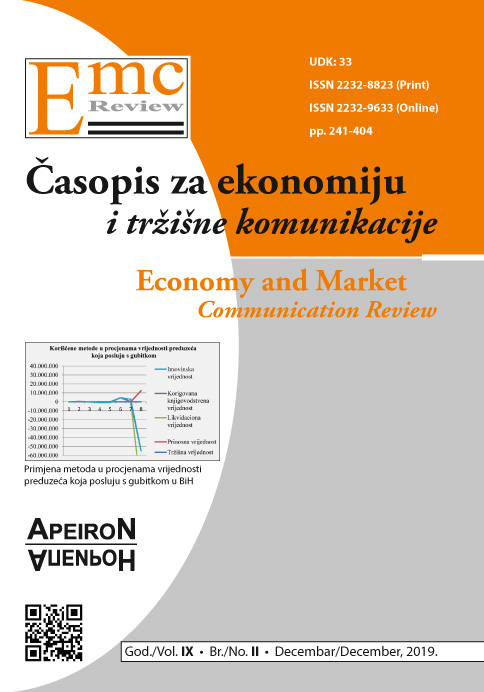FOREIGN DIRECT INVESTMENT TRENDS
DOI:
https://doi.org/10.7251/EMC1902339BAbstract
The beginning of this century is characterized by deepening globalization and one of the main features of this process is global foreign direct investment flows. The relevance of foreign direct investment as a source of economic growth is inevitable and it has sound theoretical foundation. Despite this fact, many forces shaping the global economy receive a significant amount of attention, but foreign direct investment is often overlooked. Technological progress, trade and foreign direct investment are interrelated. Namely, foreign direct investment has greatly accelerated the spread of innovation and technology, while the technological advances especially in the era of Industry 4.0 have been driving the dynamics of foreign direct investment. Due to expected positive impacts, many countries are continuing policy efforts aimed at attracting foreign direct investment. However, foreign direct investment is experiencing new trends. Over the last few decades the global map of inward and outward foreign direct investment has changed significantly. There are new players with increasing roles in the global foreign direct investment area which are reshaping the world economy. Global foreign direct investment is undergoing a shift as emerging markets countries both inflows and outflows rise dramatically. For example, China’s outbound foreign direct investment has been growing dramatically in recent years, and impacted significant shifts in the global economy. Motives for foreign direct investment, as well as the type are changing due to globalization and new trends, especially high liberalization of trade. The proliferation of global value chains also influenced foreign direct investment trends. One of the examples is necessity of rethinking the framework on motives of foreign direct investment when analyzing emerging market multinational enterprises and their interdependent relationships within global value chains. The contribution of the paper is three-fold. Firstly, the paper gives an overview of key global and regional foreign direct investment trends. Secondly, key factors, as well as potential impacts of these changes are explored. Thirdly, paper offers recommendations for new investment policies.Downloads
Published
2020-03-03
Issue
Section
Чланци
